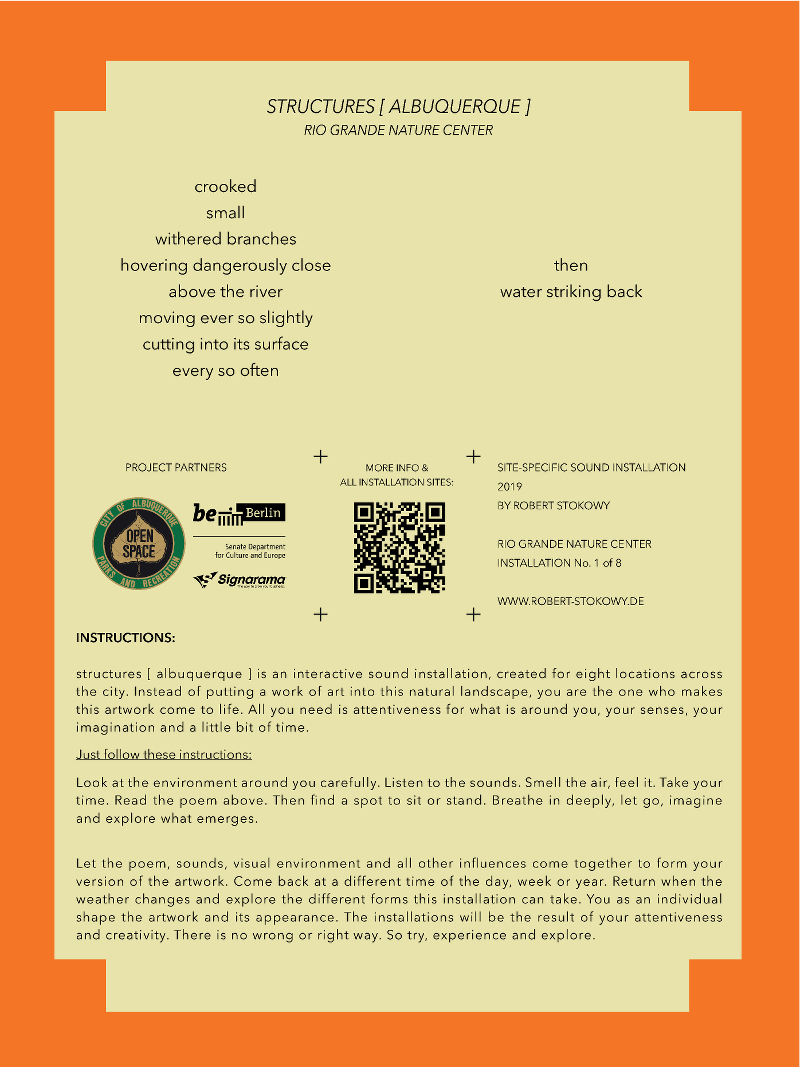Structures [Albuquerque]
Installations by Robert StokowyOpening reception Sunday, April 21, 2-5pmOpen Space Visitor Center6500 Coors Blvd NWFree and open to the publicUnstructured Open Space: Robert Stokowy’s Structures (Albuquerque)
Robert Stokowy’s Structures (Albuquerque)


Installation at the Rio Grande Nature Center.
courtesy of the artist








